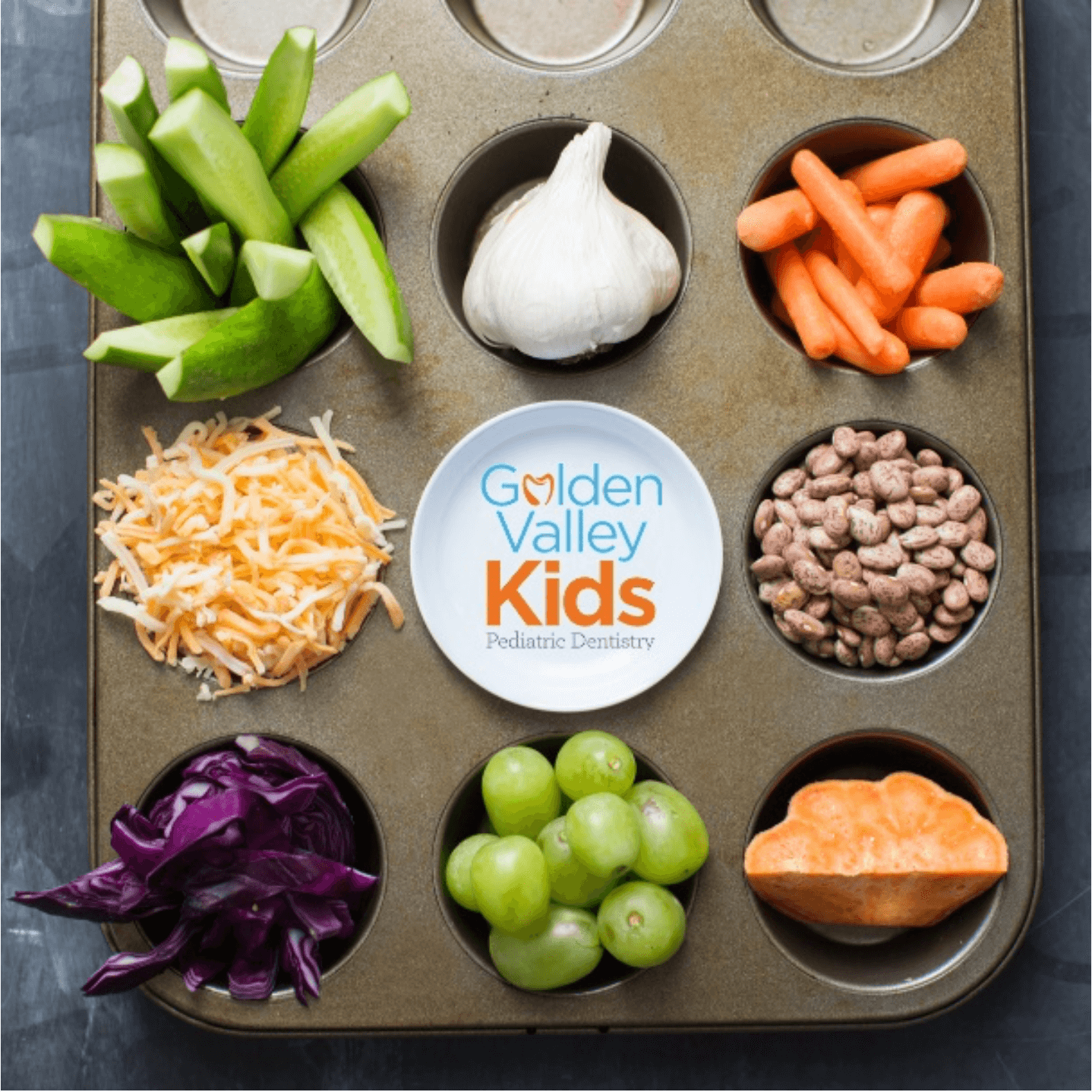
Did you know that fluoride is a naturally occurring substance? Most people associate fluoride with visits to the dentist, tooth paste, and municipal water. But let’s find out more about this inorganic anion! Fluoride is a mineral that occurs naturally in many foods, soil, and water. And of course, you can find plenty at our Pediatric Dentistry office in Minneapolis, MN.
Do you remember the periodic table of elements? Fluoride comes from fluorine, which is a common, natural, and abundant element. Fluorine is a chemical element with the symbol F and atomic number 9. It is a halogen, which means “salt-producing.” Because it’s so electronegative, it reacts with almost every other element! This is why you’ll see it combined with other elements as a “fluoride.” For example, there’s calcium fluoride, potassium fluoride, aluminum fluoride, etc.
You might be wondering how much fluoride per day is safe to ingest. Your body needs fluoride to keep your bones strong and to help prevent tooth decay. Adults require 3-4 milligrams per day, and most of us here in the USA have no problems getting adequate fluoride through drinking fluoridated water, our oral hygiene care, and eating foods with fluoride. It’s really important that kids ingest some fluoride every day, since their permanent teeth are calcifying in their bones. As the teeth form, fluoride incorporates into the tooth enamel, creating a stronger, more resistant tooth! Some foods that contain fluoride include black tea, white wine, grape juice, cucumbers, carrots, garlic, cabbage, processed chicken and seafood, and potatoes. Additionally, you can find fluoride in chocolate almond milk, barley, rice, yams, cassava, grits, beans, cheese and some bottled water. If you’re interested in seeing how much fluoride is in food, check out the USDA National Nutrient Database.
One area where I commonly recommend caution is with formula-fed infants. There is 0.1-0.3 ppm fluoride on average in both soy and milk based baby formulas. So, what does this mean for you? If you are using baby formula, you don’t want to reconstitute it with tap water, especially if the water in your area is fluoridated because your infant will be at risk for developing fluorosis on their permanent teeth. In addition, many bottled waters contain fluoride (even if it doesn’t say that on the label) because fluoride occurs naturally in many water sources. If you want to be sure that the water you’re using to reconstitute baby formula has no minerals in it, distilled water is the way to go.
If you’re interested in fluoride levels in your municipal water system, you can check out the CDC’s website My Water’s Fluoride.
As always, if you have any questions, feel free to give us a call.
Let’s Talk About Natural Sources of Fluoride with Dr. Adena Borodkin of Golden Valley Kids Pediatric Dentistry in Golden Valley, MN
Did you know that fluoride is a naturally occurring substance? Most people associate fluoride with visits to the dentist, tooth paste, and municipal water. But let’s find out more about this inorganic anion! Fluoride is a mineral that occurs naturally in many foods, soil, and water. And of course, you can find plenty at our Pediatric Dentistry office in Minneapolis, MN.
Do you remember the periodic table of elements? Fluoride comes from fluorine, which is a common, natural, and abundant element. Fluorine is a chemical element with the symbol F and atomic number 9. It is a halogen, which means “salt-producing.” Because it’s so electronegative, it reacts with almost every other element! This is why you’ll see it combined with other elements as a “fluoride.” For example, there’s calcium fluoride, potassium fluoride, aluminum fluoride, etc.
You might be wondering how much fluoride per day is safe to ingest. Your body needs fluoride to keep your bones strong and to help prevent tooth decay. Adults require 3-4 milligrams per day, and most of us here in the USA have no problems getting adequate fluoride through drinking fluoridated water, our oral hygiene care, and eating foods with fluoride. It’s really important that kids ingest some fluoride every day, since their permanent teeth are calcifying in their bones. As the teeth form, fluoride incorporates into the tooth enamel, creating a stronger, more resistant tooth! Some foods that contain fluoride include black tea, white wine, grape juice, cucumbers, carrots, garlic, cabbage, processed chicken and seafood, and potatoes. Additionally, you can find fluoride in chocolate almond milk, barley, rice, yams, cassava, grits, beans, cheese and some bottled water. If you’re interested in seeing how much fluoride is in food, check out the USDA National Nutrient Database.
One area where I commonly recommend caution is with formula-fed infants. There is 0.1-0.3 ppm fluoride on average in both soy and milk based baby formulas. So, what does this mean for you? If you are using baby formula, you don’t want to reconstitute it with tap water, especially if the water in your area is fluoridated because your infant will be at risk for developing fluorosis on their permanent teeth. In addition, many bottled waters contain fluoride (even if it doesn’t say that on the label) because fluoride occurs naturally in many water sources. If you want to be sure that the water you’re using to reconstitute baby formula has no minerals in it, distilled water is the way to go.
If you’re interested in fluoride levels in your municipal water system, you can check out the CDC’s website My Water’s Fluoride.
As always, if you have any questions, feel free to give us a call.